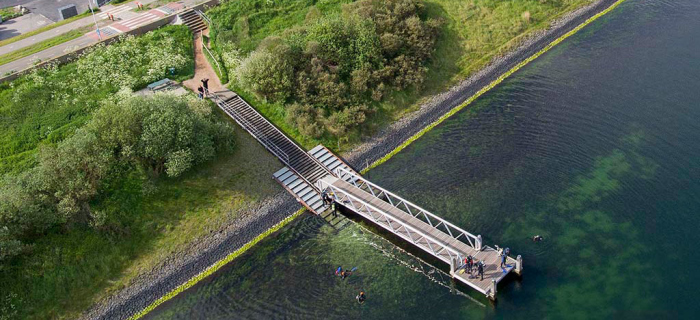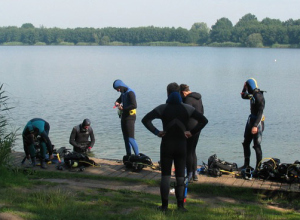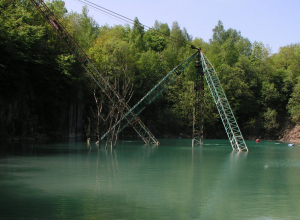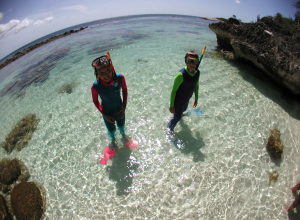Diving in the Netherlands

Diving in the Netherlands it is mainly done in old sand dredges. The real diving mecca in Holland however, is Zeeland, with Lake Oosterschelde as the biggest attraction. Due to its enormous biodiversity Lake Oosterschelde is worldwide known as an interesting diving area. Besides the Dutch, many Belgians, Germans and French find their way to the Oosterschelde. Other important diving areas in Holland are Lake Grevelingen in Zeeland and fresh water lake The Vinkeveense Plassen in the Dutch city of Vinkeveen in Utrecht.
Diving in the Netherlands is fun, whether you want to dive in freshor saltwater. Visibility in Dutch waters is limited. It varies from 0.5 to an occasional 20 meters depending on the location, the season, the weather or the number of divers in the water. What is diving in Holland like? What do divers experiences in these waters? And what species live here? Search in our archive fo logreports and find out. Insert a word such as 'pike' or wreck, select a period an check out your results.
Spawning area Oosterschelde Lake
Oosterschelde is a spawning area. Different species leave the North Sea for a while to reproduce in this area. Each in their own season, with the water temperature as their trigger. Therefore biodiversity changes throughout the years, cuttle fish and squid in Spring an Summer and sea horses from June till Octobre. Diving in Lake Oosterschelde needs some preparation and experience. It’s tidal water with every day a short period in which diving is possible. Consult an experience diver, use a timetable or the DIVERSE GUIDE app to plan your dives. Keep in mind though, that our tidal planner may contain errors and that you’re always responsible for your own safety.
Veerse Meer and Westerschelde
Lake Oosterschelde has more than 100 dive sites, such as De Zeelandbrug (Zeeland Bridge), The Stelhoeve, Gorishoek, Plompe Tower, Nieuwe Sluis and Kattendijke. Biodiversity is enormous with over 250 species. You’ll see more per square meter than in the famous diving regions of, for example, Malta or Bonaire. This huge explosion of life forms is a feast for every diver. Other diving lakes in Zeeland, besides Lake Grevelingen and Lake Oosterschelde are Lake Westerschelde and Lake Veerse Meer.
Lake Grevelingen, Europe's largest saltwater lake
Lake Grevelingen lis the largest saltwater lake in Europe. It originated in 1971 when the Brouwersdam was build as part of the Delta Works. Today, it is an extensive recreation area, with about 18 shore dive sites. Tide isn’t an issue at Lake Grevelingen, you can dive in Lake Grevelingen whenever you want. Dive spots such as Het Koepeltje, Scharendijke, Dreischor Gemaal and Kerkweg Den Osse are some of the most famous one. Although Lake Grevelingen is completely sealed off, there is saltwater coming in through the Brouwersdam, which benefits the underwater life. Permanent residents of Lake Grevelingen are swamp crabs, beach crabs, shrimps, starfish, gobies and more.
Freshwater dive sites in the Netherlands
The Netherlands also has hundreds of freshwater dive sites. Most of these are old sand excavations with a recreational destination. Whether such a puddle ever becomes a dive is dependent on many things. The composition of the bottom is one of the most important factors. A hard, sandy bottom is the most ideal. How do we discover dive sites in Holland? Every year dozens of divers jump into new excavations to determine visibility as well as biodiversity. At the same time every year dive sites are abandoned due to ecological changes caused by excessive diving. Except for sand excavations, the Dutch also dive in some canals and lateral arms of rivers.
Newly discovered dive sites
Visibility, biodiversity and accessibility of freshwater dive sites can vary from year to year. That's why DIVERS GUIDE yearly presents a diving advice. Where are conditions at best this year? Where were facilities improved or where is a wrecks been scuttled. And what new dive sites have been discovered? Most dive sites in Holland are freely accessible, simple enter the water from the shore. Some dive schools such as De Beldert of Duiklocatie Boschmolenplas charge a small fee for entrance or use of their facilities near the water. In most dive sites you’ll come across object, next to only fresh water species. Car wrecks, plan wrecks, old busses are great dive objects and ideal habitats for pike or pike-perch. Divers Duide offers a wide range of dive maps to navigate and find your way. These dive maps are especially valuable for new divers and dive instructors. Are you interested in diving in Holland, check our dive sites with lots of free information and a dive site description in English.












Comment to this article